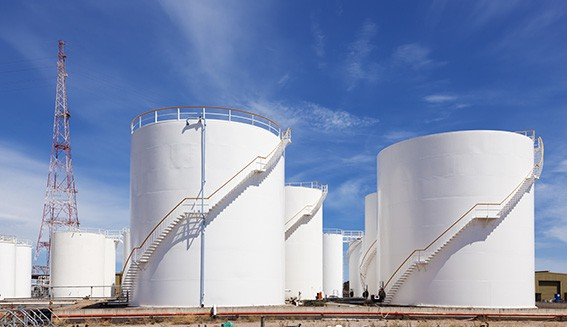Warehouse Executive (1 years diploma)
Warehouse Executive click here
Brief Job Description: The individual is responsible for updating warehouse data
into the ERP system, prepare reports, analyse of data for trends, prepare
forecasts, print labels, and coordinate with line functions to ensure seamless
operation of warehouse functions.

Qualifications Pack for Warehouse Executive
Options
Option 1: Forecasting
The unit is about conducting trend analysis and developing forecasts factoring in
various micro and macro-economic factors
Personal Attributes: A warehouse executive should be proactive, organised, and
eye for details. S/he should be able to draw key findings based on data analysis.
S/he should have good computer skills and numerical skills. The individual should
have good interpersonal skills and ability to work with various stakeholders.
Job Role Warehouse Executive
Role Description
The individual is responsible for updating warehouse data
into the Enterprise Resource Planning (ERP) system,
prepare reports, analyse of data for trends, prepare
forecasts, print labels, and coordinate with line functions
to ensure seamless operation of warehouse functions.
NSQF
Minimum Educational Qualifications
Maximum Educational Qualifications
4
Graduate (or) Diploma/ Class XII with relevant experience (or)
Class X with relevant experience
Prerequisite License or Training Not Applicable for License. Should be proficient and cleared
Level 3
Minimum Job Entry Age 19 years
Experience
Diploma/Class XII with 1 year of experience in warehouse
operations (or)
Class X with 3 years of experience in warehouse operations
Description
Core Skills/Generic
Skills
Core Skills or Generic Skills are a group of skills that are key to learning and
working in today’s world. These skills are typically needed in any work
environment. In the context of the NOS, these include communication related
skills that are applicable to most job roles.
Function
Function is an activity necessary for achieving the key purpose of the sector,
occupation, or area of work, which can be carried out by a person or a group
of persons. Functions are identified through functional analysis and form the
basis of NOS.

Job role Job role defines a unique set of functions that together form a unique
employment opportunity in an organization.
Knowledge and Understanding
Knowledge and Understanding are statements which together specify the
technical, generic, professional and organizational specific knowledge that an
individual needs in order to perform to the required standard.
National Occupational
Standards (NOS) NOS are Occupational Standards which apply uniquely in the Indian context
Occupation Occupation is a set of job roles, which perform similar/related set of functions
in an industry.
Organisational Context
Organisational Context includes the way the organization is structured and
how it operates, including the extent of operative knowledge managers have
of their relevant areas of responsibility
.
Performance Criteria Performance Criteria are statements that together specify the standard of
performance required when carrying out a task.
Qualifications
Pack(QP)
Qualifications Pack comprises the set of NOS, together with the educational,
training and other criteria required to perform a job role. A Qualifications
Pack is assigned a unique qualification pack code.
Electives Electives are NOS/set of NOS that are identified by the sector as contributive
to specialization in a job role. There may be multiple electives within a QP for
each specialized job role. Trainees must select at least one elective for the
successful completion of a QP with Electives.
Options Options are NOS/set of NOS that are identified by the sector as additional
skills. There may be multiple options within a QP. It is not mandatory to select
any of the options to complete a QP with Options.
Unit Code Unit code is a unique identifier for an Occupational Standard, which is
denoted by an ‘N’
Unit Title Unit title gives a clear overall statement about what the incumbent should be
able to do.
Qualifications Pack
Code
Qualifications Pack Code is a unique reference code that identifies a
qualifications pack.
Scope
Scope is the set of statements specifying the range of variables that an
individual may have to deal with in carrying out the function which have a
critical impact on the quality of performance required.
Sector
Sector is a conglomeration of different business operations having similar
businesses and interests. It may also be defined as a distinct subset of the
economy whose components share similar characteristics and interests.
Sub-Sector Sub-sector is derived from a further breakdown based on the characteristics
and interests of its components.
Sub-functions Sub-functions are sub-activities essential to fulfil the achieving the objectives
of the function.
Technical Knowledge Technical Knowledge is the specific knowledge needed to accomplish specific
designated responsibilities.
Description
5S Sort, Set In order, Shine, Standardize and Sustain
CGST Central Goods and Services Tax
ERP Enterprise Resource Planning
GST Goods and Service Tax
GSTIN GST Identification Number

IGST Integrated Goods and Services Tax
IT Information Technology
MHE Material Handling Equipment
MIS Management Information System
NSQF National Skills Qualifications Framework
OHSAS Occupational Health and Safety Assessment Series
OH&S Occupational Health and Safety
OS Occupational Standards
PAN Permanent account number
PPE Personal Protective Equipment
QP Qualifications Pack
SAC Service Accounting Code
SGST State Goods and Services Tax
SKU Stock Keeping Unit
SOP Standard Operating Procedure
UIN Unique Identification Number
WMS Warehouse management system
Warehouse data entry and analysis using ERP
Description This unit is about making data entries and updations in ERP as well as analysing data
to draw inferences and ensuring information flow
Scope This unit/task covers the following:
• Feed in information into ERP
• Analyse and report
• Coordinate and communicate internally and to external stakeholders
Range: ERP, MS Office, Data analysis software, stationery, computer, printer, ERP
software, etc.
Performance Criteria(PC) w.r.t. the scope
Element Performance Criteria
Feed information
into ERP
To be competent, the user/individual on the job must be able to:
PC1. collect information from associate regarding shipments, loading, un-loading,
packing and binning activities, etc. and feed into ERP

PC2. obtain information from supervisors and managers regarding priorities,
complaints/delay, escalations, customer feedback etc. and feed into ERP
PC3. obtain information regarding change in inventory and feed into ERP
Analyze and report To be competent, the user/ individual must be able to:
PC4. review entries made into the ERP with respect to daily warehouse operations
PC5. perform various data analysis such as variance analysis, financial, quality,
vendor performance, customer fulfilment status, operational complaint related
internal and external stakeholders, transporters performance etc.
PC6. provide a daily report to management regarding different activities
Coordinate and communicate internally and to external stakeholders
To be competent, the user/ individual must be able to:
PC7. coordinate with customers to understand their requirements on dispatch,
tracking of orders, goods in transit, etc.
PC8. coordinate with departments to resolve queries and provide information
PC9. liaise with clients, suppliers and transport companies and provide the
necessary information
PC10.prepare periodic reports and update the management
Organizational context
The individual on the job needs to know and understand:
KA1. organizational procedures
KA2. different hubs and service stations of the organization
KA3. documentation and reporting as per organization’s mandate
KA4. security procedures to be followed
KA5. escalation matrix for reporting identified problems
KA6. risk and impact of not following defined procedures/work instructions
KA7. coding system followed to label mail
KA8. Information Technology (IT) system and ERP system of the organization
B. Technical knowledge
The individual on the job needs to know and understand:
KB1. use of computer and associated equipment
KB2. basic trouble shooting regarding telephones and computers
KB3. using the ERP
KB4. data analysis
KB5. report preparation
KB6. geographical spread of states and cities
KB7. how to read labels and understand instructions in the customer query
resolution log book
KB8. understanding of various escalations regarding resolving and catering to the
customer query
KB9. overall process from pickup to delivery and different departments engaged in
the process
KB10. types of shipments being handled
KB11. special characteristics and handling requirements of shipments, if any
Skills (S)
A. Core skills/
generic skills
Reading skills
The user/individual on the job needs to know how to read:
SA1. written instructions
SA2. product instructions, invoicing label and shipment labels
SA3. product tags and labels
SA4. various reports and notes

Writing skills
The user/individual on the job needs to know how to:
SA5. write damage reports and daily output reports
SA6. generate daiy reports from Management Information System (MIS)
SA7. Develop presentations on operational trends
Oral communication (listening and speaking skills)
The user/individual on the job needs to know and understand how to:
SA8. communicate with supervisors and co-workers
SA9. collect information from supervisors, associates and peers
Professional skills Decision making
The user/individual on the job needs to know how to:
SB1. conduct basic checks and verify the accuracy of the data provided
SB2. identify errors in data reporting in ERP and resolve the same or escalate if
required
SB3. draw inferences and conclusions based on trend analysis
Plan and organize
The user/individual on the job needs to know how to
SB4. maintain puntuality
SB5. plan for timely collection of information from spervisors and associates
SB6. organise the data to streamline data entry processes
SB7. be a team player and achieve joint goals
Customer centricity
The user/individual on the job needs to know how to:
SB8. adhere to customer timelines
SB9. address urgency of customers
SB10. speak politiely with customers and take their feedback constructively
Problem Solving
The user/individual on the job needs to know how to:
SB11. identify common trends as per analysis and report the same to management
SB12. suggest possible solutions for the common issues in daily operations
identified based on information
SB13. verify the accuracy of the data and apply filters before updating the data into
ERP
Analytical thinking
The user/individual on the job needs to know how to:
SB14. verify the authenticity of the data and apply filters to remove aberrations in
the data
SB15. analyse trends to identify defaults for corrective action as needed
Critical thinking
The user/individual on the job needs to know how to:
SB16. observe the data to identify abberations in the same
SB17. cross check data to check for data gaps and mistakes in reporting
Perform inbound and outbound documentation
Description This unit is about preparing documentation for inbound and outbound goods in a
warehouse
Scope This unit/task covers the following:
• Perform inbound and outbound documentation
• Undertake claims documentation
Range: ERP, MS Office, SOP, Data analysis software, stationery, computer, printer,
ERP software, etc.
Performance Criteria(PC) w.r.t. the scope
Element Performance Criteria
Perform inbound and
outbound
documentation
To be competent, the user/individual on the job must be able to:
PC1. before unloading, check packages for availability of mandatory documents
PC2. perform the arithmetic check on inbound packages to verify accuracy of
numbers in accordance with system information
PC3. conduct preliminary QC check along with warehouse supervisor for damaged
and tampered packages
PC4. prepare inbound documentation and get it signed by the shipper
PC5. follow-up with the delivery team and update the status of the delivery in the
system
PC6. check the delivery manifest with the pick list to cross verify that correct
products are being shipped out
PC7. perform the arithmetic check on outbound packages to verify accuracy of
numbers
PC8. conduct preliminary QC check of outbound packages for damages
PC9. update the information regarding failed delivery in the system with a valid
reason
PC10.check if the delivery data is updated in the system for proper tracking
PC11.check for availability and correctness of appropriate documentation including
air way bill, bill of lading, fumigation certificate, PGA (Participative Government
Agencies) documentation, customs documentation etc.
PC12.perform complete outbound documentation and update same in ERP
Undertake claims
documentation
To be competent, the user/ individual must be able to:
PC13.obtain the list of claims, the individual claim forms, the claims processing
checklist and the inspection checklist from the manager/supervisor
PC14.check the reason in the claim form and perform a visual inspection of the
quarantined goods along with concerned supervisor
PC15.check whether the claims were filed within the authorised timelines and
classify claims as outdated or timely
PC16.verify that all the documents required (assessment valuation, invoice/bill,
claims and insurance forms, etc.) in the claims processing checklist are present
and genuine
PC17.escalate false or outdated claims to the manager
PC18.process the claim documentations to supervisor/manager for approval. On
receipt of internal approval, forward them to the concerned insurance
companies along with evidence and recommendation.
Knowledge and understanding (K)
A. Organizational
context
The individual on the job needs to know:
KA1. company’s reporting structure to support and expedite project acivities
KA2. company’s policy and work instructions on quality standards, documentation,
etc.

KA3. importance of the individual’s role in the workflow
KA4. occupational health and safety standards and security procedures to be
followed
KA5. procedures for dealing with loss or damage to goods
KA6. coding system followed to label items
KA7. ERP and reporting system of the organization
B. Technical knowledge
The individual on the job needs to know:
KB1. use of computer and associated equipment like hand held data management
devices
KB2. different material handling equipment and their uses
KB3. different geographical locations
KB4. information from the ERP system
KB5. labels and understand instructions
KB6. insurance claim documentation
KB7. escalations regarding resolving and catering to the customer query
KB8. overall process in warehouse operations
KB9. different types of goods being handled and precautions and procedures with
respect to them particularly handling of special items and dangerous goods
KB10. various inventory counting methods and processes
Skills (S)
A. Core skills/
generic skills
Reading skills
The user/individual on the job needs to know how to read:
SA1. written instructions
SA2. product instructions, invoicing label and shipment labels
SA3. product tags and labels
SA4. various reports and notes
Writing skills
The user/individual on the job needs to know how to:
SA5. write damage reports and daily output reports
SA6. generate daiy reports from MIS
SA7. Develop presentations on operational trends
Oral communication (listening and speaking skills)
The user/individual on the job needs to know and understand how to:
SA8. communicate with supervisors and co-workers
SA9. collect information from supervisors, associates and peers
SA10. communicate with vendors and insurance companies
B. Professional skills Decision making
The user/individual on the job needs to know how to:
SB1. conduct basic checks on packages both inbound and outbound
SB2. identify damamges and issues in accruacy of packages w.r.t checklists
Plan and organize
The user/individual on the job needs to know how to
SB3. maintain puntuality
SB4. plan for timely collection of information from spervisors and associates
SB5. organise the data to streamline data entry processes
SB6. Be a team player and acheive joint goals
Customer centricity
The user/individual on the job needs to know and understand how to:
SB7. adhere to the timelines
SB8. address issues related to non delivery of packages
SB9. address issues of pilferage and damage
Problem solving
The user/individual on the job needs to know and understand how to:
SB10. resolve issues with respect to idetification of damages and accuracy of
product as per specification
Analytical thinking
The user/individual on the job needs to know and understand how to:
SB11. suggest methods to streamline the tracking process
Critical thinking
The user/individual on the job needs to know and understand how to:
SB12. improve work processes by adopting best practices
SB13. concentrate on task at hand and complete it without errors
Perform quality check and inventory documentation
Description This unit is about performing basic quality check and inventory documentation
Scope This unit/task covers the following:
• Perform basic quality check
• Perform inventory documentation
• Print labels, product tags and other codes
Range: ERP, Barcode scanner, packing devices, packing material, markers and
stationery, computer, printer, calculator, counting devices, Management Information
System (MIS) software, etc.
Performance Criteria(PC) w.r.t. the Scope
Element Performance Criteria
Perform basic quality
check
To be competent, the user/individual on the job must be able to:
PC1. identify the sample for quality check from the inbound and outbound
shipments
PC2. conduct a basic product description match, brand match, logo match,
manufacturing location match, check for authenticity of the product and
check for damages on the packaging with respect to the information in the
Enterprise resource planning (ERP)
PC3. prepare quality check report and update to manager in case of any
aberrations with respect to desired quality and product configuration
Perform inventory
check and
documentation
To be competent, the user/individual on the job must be able to:
PC4. obtain list of stored items from the supervisor and the system along with
location of each item
PC5. assess the number of items to be counted daily considering the sample size
and the total number of Stock Keeping Units (SKU)

PC6. obtain Personal Protective Equipment (PPE) for working on the shop floor
PC7. physically count the number of items and cross check them with the system
report
PC8. verify inventory records with system and the physical inspection and record
the same
PC9. prepare a daily inventory report and highlight discrepancies
Print labels, product
tags, and other codes
To be competent, the user/ individual must be able to:
PC10. obtain information from supervisor and MIS regarding the on-going activities
for which bar codes, labels, invoices need to be printed
PC11. check and verify the list with the system for correctness
PC12. print the bar codes, product tags, address tags, labels, etc. and handover to
the respective supervisors
PC13. maintain a count and record for daily printing activities
Organizational
context
The individual on the job needs to know and understand:
KA1. company’s reporting structure to support and expedite project acivities
KA2. company’s policy and work instructions on quality standards, documentation,
etc.
KA3. importance of the individual’s role in the workflow
KA4. occupational health and safety standards and security procedures to be
followed
KA5. procedures for dealing with loss or damage to goods
KA6. coding system followed to label items
KA7. ERP and reporting system of the organization
B. Technical knowledge
The individual on the job needs to know and understand:
KB1. use of computer and associated equipment like hand held data management
devices
KB2. using various printing devices such as barcode printers, product tag, address
tag label printers
KB3. different material handling equipment and their uses
KB4. different geographical locations
KB5. information from the ERP/ MIS system
KB6. labels and understand instructions
KB7. escalations regarding resolving and catering to the customer query
KB8. overall process in warehouse operations
KB9. different types of goods being handled and precautions and procedures with
respect to them particularly handling of special items and dangerous goods
KB10. various inventory counting methods and processes
Skills (S)
A. Core skills/
generic skills
Reading skills
The user/individual on the job needs to know how to read:
SA1. written instructions
SA2. product instructions, invoicing label and shipment labels
SA3. product tags and labels
SA4. various reports and notes

Writing skills
The user/individual on the job needs to know how to:
SA5. write damage reports and daily output reports
SA6. generate daiy reports from MIS
SA7. develop presentations on operational trends
Oral communication (listening and speaking skills)
The user/individual on the job needs to know and understand how to:
SA8. communicate with supervisors and co-workers
SA9. collect information from supervisors, associates and peers









